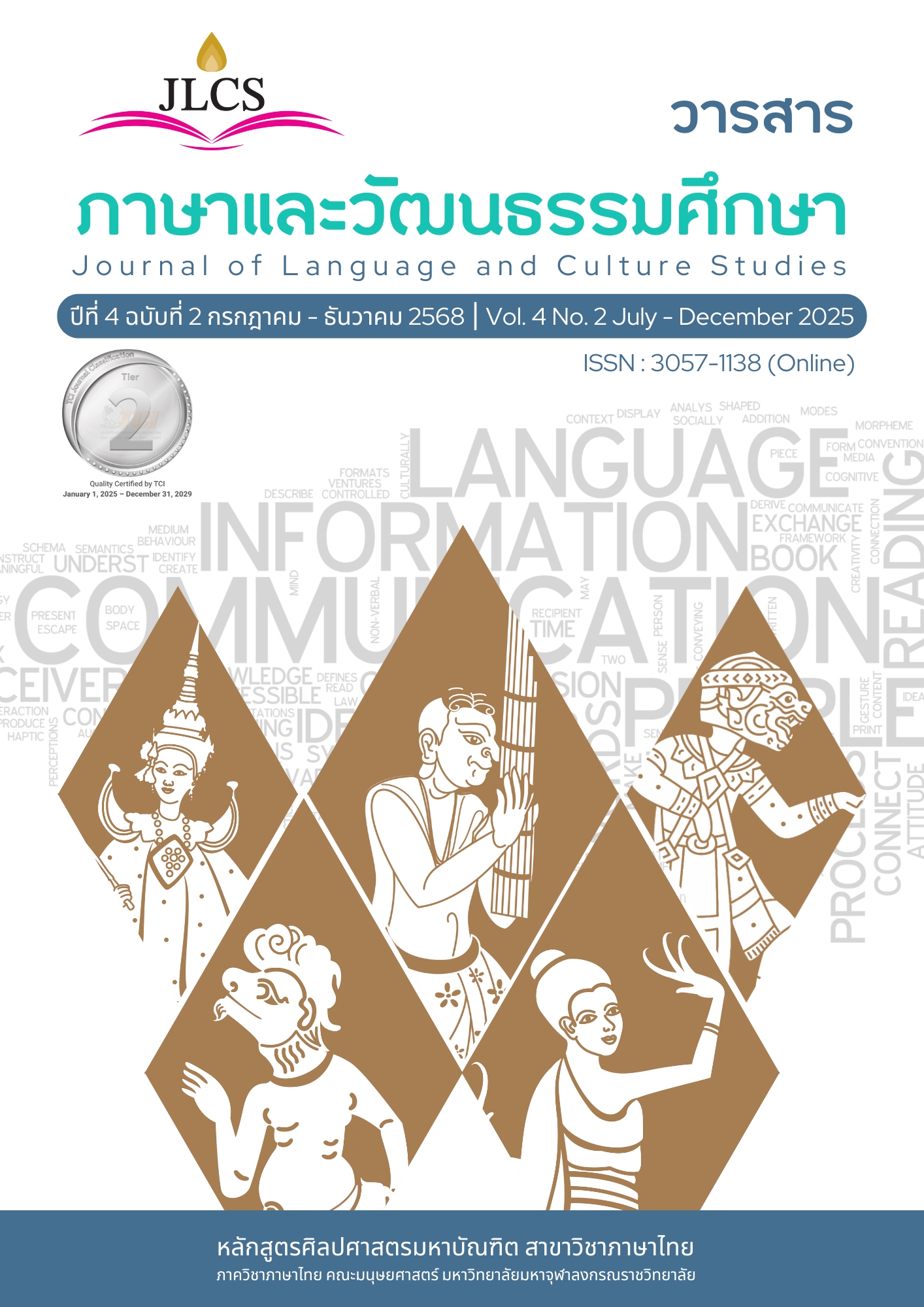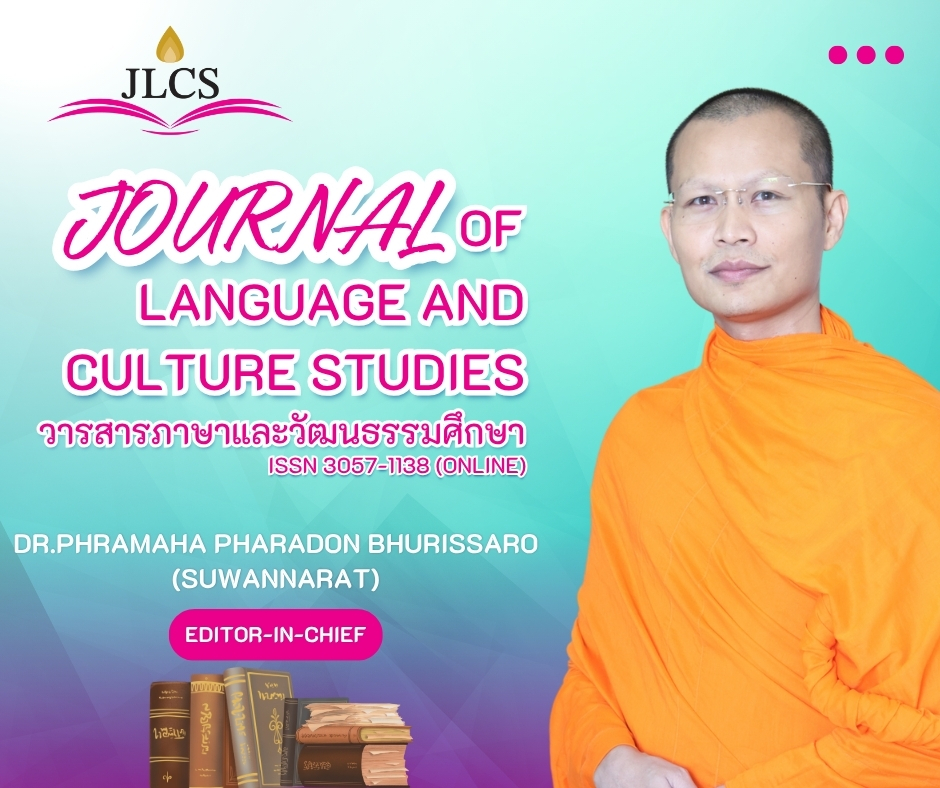ENGLISH LEARNING INNOVATION FOR DISSEMINATION OF BUDDHIST PRINCIPLES THE DIGITAL ERA
Keywords:
Buddhism, English Language Learning Innovation, Dharma Dissemination, Digital Technology, Digital EraAbstract
This academic article aims to investigate English language learning innovations for Buddhist principles dissemination in the digital era. The study focuses on analyzing digital technology applications to develop propagation methods that align with target audience behaviors. The research employs document analysis and synthesis, examining academic literature including research papers, articles, and documents related to Buddhist propagation and educational technology in the digital age. Findings reveal that effective learning innovations comprise three key components: (1) Adaptive Learning systems that customize content according to learner capabilities, (2) Augmented Reality and Virtual Reality (AR/VR) technologies that create immersive learning experiences, and (3) Artificial Intelligence applications for content analysis and optimization tailored to individual learners. The study emphasizes the importance of integrating modern technology while preserving the authentic essence of Buddhist teachings. Policy recommendations focus on encouraging relevant organizations to develop curricula and digital platforms that support effective and sustainable international Buddhist propagation.
References
นาวิน วงศ์รัตนมัจฉา. (2556). ศึกษาผลสัมฤทธิ์การเผยแผ่พระพุทธศาสนาในกลุ่มชาติพันธุลีซูของพระธรรมจาริก. วารสาร มจร สังคมศาสตร์ปริทรรศน์, 2(1), 130–147.
พระครูปลัดณัฏฐพล ขนฺติพโล (ชินปัญชรางกูร). (2563). การใช้นวัตกรรมการจัดการเรียนการสอนวิชาพระพุทธศาสนาสำหรับนักเรียนโรงเรียนประถมศึกษาชั้นปีที่ 6 อำเภอบางบัวทอง จังหวัดนนทบุรี. วารสารบัณฑิตศาส์น มหาวิทยาลัยมหามกุฏราชวิทยาลัย, 18(1), 165–179.
พระครูสุนทรธรรมากร สุจิตฺโต. (2566). ปาฏิหาริย์ 3 : นวัตกรรมสื่อการสอนพุทธธรรม. วารสาร มจร บาฬีศึกษาพุทธโฆสปริทรรศน์, 9(3), 251–263.
พระครูวินัยธรวุฒิไกร อภิรกฺโข, พระณัฐวุฒิ พันทะลี, พระครูใบฎีกาเดชา นามวงษา และอานันท์ กรมน้อย. (2567). การปรับตัวและการเผยแผ่พระพุทธศาสนาของพระสงฆ์ในสังคมยุคดิจิทัล. วารสารวิชาการพระพุทธศาสนาเขตลุ่มแม่น้ำโขง, 7(1), 33–45.
พระครูวิโรจน์กาญจนเขต และพระครูสิริกาญจนาภิรักษ์. (2563). วิปัสสนากรรมฐานเพิ่มพลังจิตสู้ภัยโควิด - 19: บทเรียนจากองค์ดาไลลามะ. วารสารศิลปการจัดการ, 4(2), 409–418.
พระภมร ภูริปญฺโญ (ช่อผูก) และพระปลัดอร่าม เรนโท. (2566). การฟื้นฟูพระพุทธศาสนาเพื่อให้สอดคล้องกับสังคมปัจจุบัน. วารสารพุทธจิตวิทยา, 8(2), 321–334.
พระมหาจักรพล สิริธโร. (2563). การเผยแผ่พุทธศาสนาในยุคไทยแลนด์ 4.0. วารสารสถาบันวิจัยญาณสังวร มหาวิทยาลัยมหามกุฏราชวิทยาลัย, 11(1), 80–90.
พระศุภชาติ (ธมฺมิสฺสโร) สําลีวงษ์, พระปฐมพร (กิตฺติวโร) อรุณรักษ์, รัชฎาภรณ์ ลิมปนันทพงศ์ มนสิชา มะลิทอง, และพระครูบวรชัยวัฒน์. (2567). นวัตกรรมสื่อสังคมออนไลน์เพื่อเผยแผ่พระพุทธศาสนา. วารสารมหาจุฬานาครทรรศน์, 11(1), 52–60.
สุนีย์ โคธีรานุรักษ์, ทวีศิลป์ กุลนภาดล และอภิธีร์ ทรงบัณฑิตย์. (2565). พัฒนาการของการนำเทคโนโลยีที่เปลี่ยนแปลงพลิกผันมาใช้ในสถาบันอุดมศึกษาไทย. วารสารมานุษยวิทยาเชิงพุทธ, 7(2), 102–119.
ศุภสิณี รัตตะคุ ภัทธิดา แรงทน และพูไทย วันหากิจ. (2565). แนวคิดและความเชื่อในการสร้างพระเครื่องจากอดีตสู่ปัจจุบัน. วารสารบวรสหการศึกษาและมนุษยสังคมศาสตร์, 3(2), 21–35.
อุทิส ศิริวรรณ. (2560). สถานการณ์พระพุทธศาสนาในโลกตะวันตก. วารสารธรรมธารา, 3(2), 79-141.









